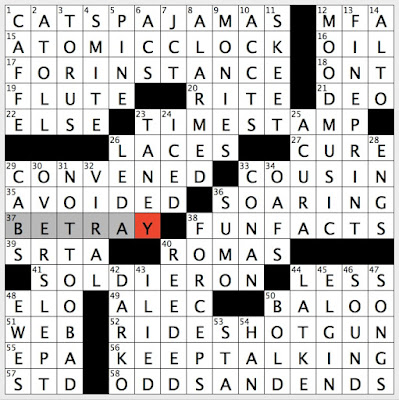Unlock the Power of Feedback: Your Actionable Guide
Imagine a world where improvement never happens. Where mistakes are met with silence, and potential is never fully explored. This isn’t just a hypothetical scenario; it’s the stagnation that can set in when feedback, the lifeblood of growth, is absent or misused. Feedback is more than just a word; it’s a powerful tool, a catalyst for change, and a fundamental driver of success in both our personal and professional lives. Yet, many of us undervalue its importance, struggle to give or receive it effectively, or simply don’t understand its transformative potential. This article serves as your comprehensive guide to unlocking the power of feedback. We will delve into the definition and significance of feedback, explore actionable techniques for giving and receiving it constructively, and reveal how mastering this art can propel you towards your desired outcomes and unlock your full potential.
Understanding Feedback: More Than Just Comments
Before we dive into the mechanics of giving and receiving feedback, it’s crucial to grasp its essence. At its core, feedback is the transmission of evaluative or corrective information about an action, event, or process back to the originator. It’s the loop that connects performance with improvement. Think of it like this: in a system, feedback occurs when outputs are routed back as inputs, creating a cause-and-effect cycle. In human interactions, feedback is our way of sharing observations, evaluations, and suggestions.
When you give feedback, you offer a helpful response to someone’s work, idea, or behavior, aiming to inform, educate, or guide. Conversely, when you receive feedback, you are absorbing external information that can illuminate your strengths, highlight your weaknesses, and provide a roadmap for development. Feedback can be formal, structured, and documented, or informal, spontaneous, and conversational. It can be praise, recognition, criticism, advice, or a simple observation.
Despite its power, feedback is often misunderstood and underutilized. It is perhaps the most underrated and neglected part of our personal and professional development journey. However, its significance cannot be overstated. Effective feedback provides clarity, fosters learning, builds relationships, and ultimately, drives performance and growth. It helps individuals and organizations adapt, innovate, and thrive in an ever-changing world.
Understanding the different types of feedback can also be beneficial. Solicited feedback is requested, like asking a colleague for their opinion on a presentation. Unsolicited feedback comes unexpectedly, such as hearing from a customer about a service experience. Formal feedback is typically part of performance reviews or structured processes. Informal feedback happens spontaneously in conversations. Recognizing these distinctions helps tailor your approach depending on the situation.
Mastering the Art of Giving Valuable Feedback
Providing feedback, especially critical or corrective feedback, can be daunting. Done poorly, it can demotivate, confuse, or even offend. But when delivered effectively, your feedback becomes a powerful gift, fostering growth and strengthening relationships. Here’s how to master the art of giving valuable feedback:
Focus on Behavior, Not the Person
One of the most crucial aspects of giving feedback is separating the action or behavior from the person themselves. Instead of saying, “You were unprofessional during the meeting,” frame it as, “The way you interrupted multiple times during the Q&A segment could be perceived as unprofessional.” This distinction protects the recipient’s self-esteem and makes the feedback more actionable.
Use the “Feedback Sandwich” Strategically
The “feedback sandwich” involves starting with positive feedback, delivering the constructive criticism or observation in the middle, and ending with another positive comment. While sometimes criticized for feeling insincere if not executed properly, it can be an effective tool to soften the blow of difficult feedback and acknowledge the recipient’s overall contributions.

However, don’t rely on this structure blindly. Consider the relationship you have with the recipient, the nature of the feedback, and the context. Sometimes, direct and honest feedback, especially if the issue is critical, is necessary and more appreciated in the long run. Use the sandwich approach thoughtfully, ensuring the positives are genuine and relevant. Explosive Feedback: Unlocking the Secrets of NYT Crossword
Be Specific and Concrete
General statements like “Your work needs improvement” are vague and unhelpful. Effective feedback is specific. Instead, say, “In the project report, the data analysis section lacked specific examples to support the conclusions drawn.” Or, “During the team brainstorming session, I noticed you rarely contributed your initial ideas, perhaps due to shyness or uncertainty?” Specificity clarifies expectations and provides a clear target for change.
Provide Context and Examples
Explain *why* the feedback is being given and what the desired outcome is. Relate the feedback to shared goals, team objectives, or quality standards. Sharing relevant examples further illustrates the point and makes the feedback more tangible. “Recall the client meeting last Tuesday? When you presented the budget figures, your tone seemed hesitant, which might have undermined confidence in the proposal. We need to project more certainty on stage.”
Focus on Impact and Future Actions
Feedback should not just criticize the past; it should guide the future. End your feedback by suggesting concrete actions or asking questions that prompt the recipient to think about improvement. “Moving forward, could you double-check the deadlines mentioned in your proposals? Let’s schedule a quick review before sending them out.” This empowers the recipient and makes feedback constructive rather than just evaluative.
Consider the Timing and Environment
Choose an appropriate time when the recipient is not rushed or stressed. Find a private setting where the feedback can be discussed openly without interruption or eavesdropping. Timing is critical for the effectiveness and reception of the feedback.
Be Mindful of Your Tone and Body Language
Your non-verbal cues speak volumes. Delivering feedback with a calm, respectful, and open tone, while maintaining appropriate eye contact and body language, significantly impacts how it is received. Avoid a scolding or judgmental demeanor.
Know Your Purpose and Audience
Before giving feedback, ask yourself: Why am I giving this feedback? What do I hope to achieve? Who is the recipient? Tailor your message and approach accordingly. Are you aiming to correct a specific behavior, improve performance, or foster development? Understanding your intent helps refine your delivery.
Remember, the goal of giving feedback is not to put someone down, but to help them grow. By focusing on behavior, being specific, providing context, and suggesting actions, you can deliver feedback that is truly valuable and fosters positive change.
Receiving Feedback: Embracing the Journey to Growth
Just as giving feedback requires skill, receiving it effectively is an art form in itself. Many find feedback sessions uncomfortable, perceiving criticism as a personal attack or feeling defensive. However, actively seeking and receptively receiving feedback is arguably one of the most powerful ways to accelerate your learning and development. It provides an external perspective, validates your experiences, and reveals blind spots you might not see on your own. Here’s how to navigate the process of receiving feedback gracefully and fruitfully:
Approach with an Open Mind and Curiosity
The first step is shifting your mindset. Move away from defensiveness and towards curiosity and a genuine desire to understand the other person’s perspective. Ask yourself: What specific point is the feedback provider trying to convey? What information or observation led them to this feedback? Are there valid insights here, even if they are critical?
Listen Fully and Stay Present
When feedback is being given, resist the urge to interrupt, plan your response, or start preparing a defense. Listen actively to fully absorb the message. Pay attention not just to the words spoken, but also to the tone, body language, and underlying emotions of the feedback giver. This comprehensive listening allows you to grasp the full meaning behind their words.
Seek Clarification, Don’t Assume
If something is unclear, ask questions for clarification. “Could you help me understand the specific incident you’re referring to?” or “What is the main point you’re trying to make here?” or “What do you suggest I could do differently moving forward?” This ensures you accurately understand the feedback before attempting to process it.
Separate the Feedback from Personal Worth
This is often the hardest part for many people. Try to hear the feedback about *your actions or work* separately from your overall value as a person. Feedback, even if negative, doesn’t diminish your inherent worth. It’s about a specific behavior, outcome, or area for potential improvement. Practicing self-compassion is key here.
Focus on Understanding, Not Just Defending
Aim to understand the perspective of the feedback giver. What were they seeing or experiencing? What are their intentions? Even if you don’t agree with the feedback, try to comprehend the rationale behind it. This understanding is crucial for growth.




